Best Golang Array and Slice Resources to Buy in December 2025
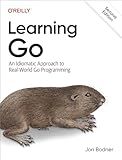
Learning Go: An Idiomatic Approach to Real-World Go Programming


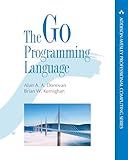
Go Programming Language, The (Addison-Wesley Professional Computing Series)


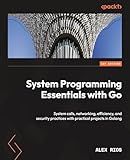
System Programming Essentials with Go: System calls, networking, efficiency, and security practices with practical projects in Golang


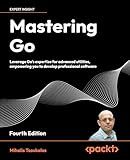
Mastering Go: Leverage Go's expertise for advanced utilities, empowering you to develop professional software



Go Programming - From Beginner to Professional: Learn everything you need to build modern software using Go



Functional Programming in Go: Apply functional techniques in Golang to improve the testability, readability, and security of your code


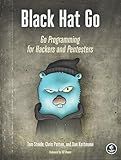
Black Hat Go: Go Programming For Hackers and Pentesters
- MASTER GO PROGRAMMING FOR HACKING WITH PRACTICAL INSIGHTS.
- ESSENTIAL TECHNIQUES FOR PENTESTERS IN A HANDS-ON FORMAT.
- ACCESSIBLE PAPERBACK FOR EASY READING AND REFERENCE.


Arrays and slices are fundamental data structures in Go (Golang) for working with collections of elements. Arrays have a fixed length, while slices are dynamic and can grow or shrink.
To declare an array in Go, you specify the type of its elements and the number of elements it can hold. For example, var numbers [5]int declares an array numbers that can hold 5 integers. Individual elements can be accessed using zero-based index, e.g., numbers[0] = 42.
Slices, on the other hand, are created using arrays, and they are more flexible as their length is not fixed. You define a slice using the syntax mySlice := []elementType{}. For instance, mySlice := []int{1, 2, 3} creates a slice of integers with three initial values.
Slices can be modified by appending or removing elements. The append() function adds one or more elements to a slice, such as mySlice = append(mySlice, 4, 5). If you want to remove elements, you can use slicing, like mySlice = mySlice[:len(mySlice)-1].
Copying a slice can be done using the copy() function. For example, newSlice := make([]int, len(mySlice)) followed by copy(newSlice, mySlice) creates a copy of mySlice in newSlice.
Slices also support a powerful feature called slicing, which allows extracting portions of a slice using the mySlice[startIndex:endIndex] syntax. This creates a new slice from startIndex up to but excluding endIndex. For instance, newSlice := mySlice[1:4] produces a slice containing elements at indices 1, 2, and 3.
Additionally, slices can be used to represent dynamically-sized arrays, such as when reading data from a file or network connection. This is because slices can automatically expand to accommodate additional elements when necessary.
In summary, arrays have a fixed length, while slices are dynamic and allow for easy modification. Slices are more commonly used due to their flexibility and dynamic nature. By understanding how to work with arrays and slices, you'll be able to handle collections of data efficiently in Go.
How to find the minimum element in a multidimensional array in Golang?
To find the minimum element in a multidimensional array in Golang, you can follow these steps:
- Initialize a variable min with a very large value or the maximum possible value in the array.
- Iterate over each element of the array using nested loops.
- Compare each element with the current minimum value (min).
- If a smaller element is found, update the value of min.
- Once all elements have been checked, the variable min will contain the minimum value in the multidimensional array.
Here is an example implementation:
package main
import "fmt"
func findMin(arr [][]int) int { min := int(^uint(0) >> 1) // Initialize with max int value
for \_, row := range arr {
for \_, num := range row {
if num < min {
min = num
}
}
}
return min
}
func main() { arr := [][]int{{4, 9, 2}, {-1, 5, 10}, {7, 3, 1}} min := findMin(arr) fmt.Println("Minimum element in the array:", min) }
In this example, the function findMin takes a 2D array arr as input and returns the minimum element. The array is iterated using nested loops, and the minimum value is updated whenever a smaller element is found. Finally, the minimum value is printed in the main function.
How to find the maximum element in an array in Golang?
To find the maximum element in an array in Golang, you can use the following algorithm:
- Initialize a variable max with a value lower than any element in the array.
- Iterate over each element in the array.
- Compare the current element with the max value. If the current element is greater than max, update max with the current element.
- After iterating over all elements, the max variable will hold the maximum element in the array.
Here is an example code that demonstrates this approach:
package main
import ( "fmt" )
func findMax(arr []int) int { max := arr[0] // Assume the first element is the maximum initially
for i := 1; i < len(arr); i++ {
if arr\[i\] > max {
max = arr\[i\]
}
}
return max
}
func main() { arr := []int{10, 50, 30, 70, 20} max := findMax(arr) fmt.Println("Maximum element is:", max) }
In this example, the findMax function takes an array as input and returns the maximum element. The main function demonstrates how to use the findMax function by finding the maximum element in the arr array.
How to find the minimum element in an array in Golang?
To find the minimum element in an array in Golang, you can iterate through the array and keep track of the minimum element. Here is an example code demonstrating this:
package main
import ( "fmt" )
func findMin(arr []int) int { min := arr[0] // Assume the first element as the minimum
for \_, num := range arr {
if num < min {
min = num // Update the minimum if a smaller element is found
}
}
return min
}
func main() { array := []int{9, 2, 0, 6, 4, 8, 7, 1, 3, 5} min := findMin(array) fmt.Println("Minimum element:", min) }
This code will output:
Minimum element: 0
In the findMin function, we initialize the min variable with the first element of the array. Then, we iterate through the array using a range loop and compare each element with the current minimum. If a smaller element is found, we update the min variable. Finally, we return the minimum value.
How to create a slice from an array in Golang?
To create a slice from an array in Go, you can use the slicing syntax. Here's an example:
package main
import "fmt"
func main() { // Create an array array := [5]int{1, 2, 3, 4, 5}
// Create a slice from the array
slice := array\[1:4\]
fmt.Println(slice) // Output: \[2 3 4\]
}
In the example above, a slice is created from the array by specifying the indices of the elements we want to include in the slice. In this case, we start with index 1 (which corresponds to the second element) and end at index 4 (which corresponds to the fifth element, exclusive). The resulting slice [2 3 4] includes the elements at indices 1, 2, and 3 of the original array.
